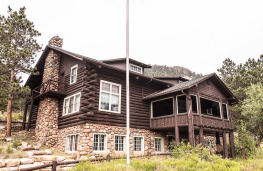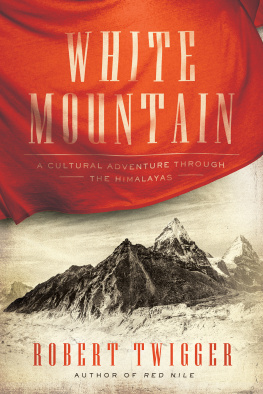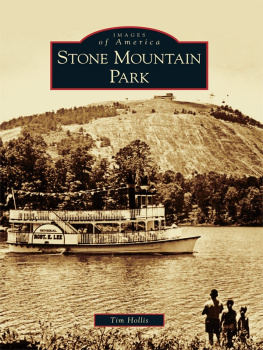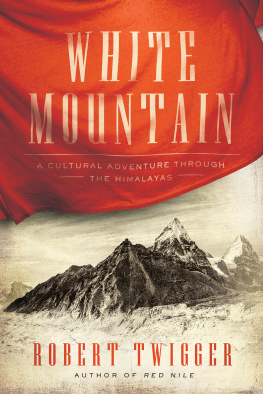Other Prose @ IP
The Terrorist , by Barry Levy
ISBN 9781922120076, AU$33
Blood , by Peter Kay
ISBN 9781922120038, AU$30
The Girl with the Cardboard Port , by Judith L. McNeil
ISBN 9781922120090, AU$33
No Ones Child , by Judith L. McNeil
ISBN 9781922120151, AU$33
Write My Face , by Kathy Sutcliffe
ISBN 9781922120014, AU$33
Shadow Patterns , by Daphne Tuttle
ISBN 9781921869846, AU$33
The Rag Boilers Daughter , by Lois Shepheard
ISBN 9781921869389, AU$30
Yellowcake Springs , by Guy Salvidge
ISBN 9781921869174, AU$33
Schadenvale Road , by Chris Mansell
ISBN 9781921479946, AU$30
Saved by the Bomb , by Eric Leadbetter
ISBN 9781921869198, AU$26.95
For the latest from IP, please visit us online at
http://ipoz.biz/Store/Store.htm
or contact us by phone/fax on 61 7 3324 9319
or sales@ipoz.biz
Glass House Books
Frenchmans Cap
Simon Kleinig was born in Adelaide. A lifelong passion for the wilderness regions of Tasmania led him to write articles for Wild magazine and several other publications. He considers himself a history enthusiast, rather than a historian, and loves delving into the human side of history. His first book, Jack Thwaites: Pioneer Tasmanian Bushwalker and Conservationist was published in 2008 and was short listed for the Tasmanian Book Prize. A second book, Rambles In Western Tasmania , is a collection of early twentieth century newspaper articles written by Charles Whitham, edited by Simon and published in 2010.
Glass House Books
Brisbane
Frenchmans Cap:
Story of a Mountain
Simon Kleinig
Glass House Books
Brisbane
Glass House Books
an imprint of IP (Interactive Publications Pty Ltd)
Treetop Studio 9 Kuhler Court
Carindale, Queensland, Australia 4152
sales@ipoz.biz
ipoz.biz/GHB/GHB.htm
First published by IP in 2012
Simon Kleinig, 2012
simon.kleinig@windingtrack.com
All rights reserved. Without limiting the rights under copyright reserved above, no part of this publication may be reproduced, stored in or introduced into a retrieval system, or transmitted, in any form or by any means (electronic, mechanical, photocopying, recording or otherwise), without the prior written permission of the copyright owner and the publisher of this book.
Printed in 11 pt Book Antiqua on 14 pt Book Antiqua.
National Library of Australia
Cataloguing-in-Publication entry:
Author: Kleinig, Simon.
Title: Frenchmans cap : story of a mountain / Simon Kleinig.
ISBN: 9781922120069 (ebk.)
Subjects: Mountaineering--Tasmania--Frenchmans Cap--Anecdotes.
Mountains--Tasmania--Frenchmans Cap--History.
Frenchmans Cap (Tas.)
Dewey Number: 796.522099466
Maps by Susan Pugsley.
Archival maps courtesy Tasmanian Archive and Heritage Office.
Front cover image: The Ivory Tower. Grant Dixon surveys the soaring east face of Frenchmans Cap from East Col. (Grant Dixon)
Back cover image: On the way to Barron Pass. A party of bushwalkers rests above Artichoke Valley, 5 April 2010. From left: Sueann McGuinness, Simon Allen, Joshua Allen, Karen Allen, Rachel Allen, Terry Reid. (Tristram Miller)
If one could spend a night on the knees of the monarch,
beside those quiet lakes, and watch the moon gradually
light up the regal symmetry of the marble heights,
the scene would form a vision of sublimity to remain
in the mind for evermore.
Charles Whitham
Four to the Frenchman, 1914
Authors note
TELLING STORIES
This book goes beyond being a mere collection of mountaineering and adventure tales. A substantial portion of the history of Tasmania has taken place under the influence of this remarkable mountain. Much of that history has been forgotten, yet few mountains, in Tasmania or continental Australia, have such a rich and compelling past. This story of Frenchmans Cap has been told in a chronological progression of journeys and events to help present a more fluid and cohesive narrative.
Some of these stories were hidden away in the files of government departments. Others were stored on library microfilm or came to light while thumbing through the yellowing pages of leather-bound newspapers. Bushwalkers diaries, long forgotten, weather-beaten and dog-eared, disclosed a wealth of information about past trips. Scores of letters, which were never intended to serve as anything more than personal correspondence, became vital links with the past and now stand as valuable historical documents in their own right. Other stories were related personally, from the lips of the early bushwalkers themselves, though sadly most of those voices are now stilled.
Few of the events detailed in this book took place in isolation. Each event was either linked to or influenced by another event occurring in the region around the same time, whether it was an explorer pushing through wet scrub, a prospector or piner working away in the remote Jane River country, or track cutters forcing their way through an uncharted wilderness. For over a hundred years trips in and around Frenchmans Cap formed a distinct pattern, very little of it random and most of it forming a matrix of activity designed to open up the region to mineral and geographical exploration.
The people mentioned in this book were true pioneers eager to discover what lay beyond the next mountain range or river. Some went out at the behest of government believing they just had a job to do, then returned home changed people, inspired with a new-found love for the natural world and for Frenchmans Cap.
Over 12 years were spent collecting and assembling the stories behind these journeys. Most journeys, however, were never recorded, except where formal government reports demanded it. Explorers, prospectors and piners had work to do, and most had more pressing tasks at hand than recording history. In this respect, Frenchmans Cap: Story of a Mountain represents a mere fragment of the history of the mountain. Most stories are now irretrievably lost in the depths of time. However, those that have emerged open tantalising windows into the past. The shadowy events of yesteryear make for exciting reading. The jigsaw that is the story of Frenchmans Cap will always remain incomplete. But enough lost pieces have been put in place to present a recognisable and often dramatic picture of the mountains past.
APOSTROPHES AND FULL STOPS
Readers will notice, and perhaps question why, the name Frenchmans Cap is shown at times with the possessive apostrophe, and at other times without. The use of both these forms of punctuation was common up to at least the first half of the 20 th Century. However, in 1966 a ruling by the Nomenclature Board of Tasmania specified that the possessive apostrophe was no longer to be used. This ruling was part of a worldwide decision to eliminate any possible misinterpretation, especially in the case of maps and charts. On nautical charts, in particular, the apostrophe and full stop could often be mistaken for a reef or a small island.
TASMANIAN PARKS AND WILDLIFE SERVICE
From 1915 until 1971 the preservation of Tasmanias scenery in its natural state was the responsibility of the Scenery Preservation Board. The states flora and fauna was overseen by the Animals and Birds Protection Board, also known as the Fauna Board. In 1971 both Boards were replaced by the National Parks and Wildlife Service (NPWS). In 1986 the Department of Lands, Parks and Wildlife (DLPW) assumed control until 1989, when the Department of Parks, Wildlife and Heritage came into being. Since the early 1990s the Parks and Wildlife Service (PWS) has been the responsible entity up to the present day. To clarify this confusing situation for readers all the above departments from 1971 have been referred to as the Parks and Wildlife Service (PWS) in this book.
Next page










